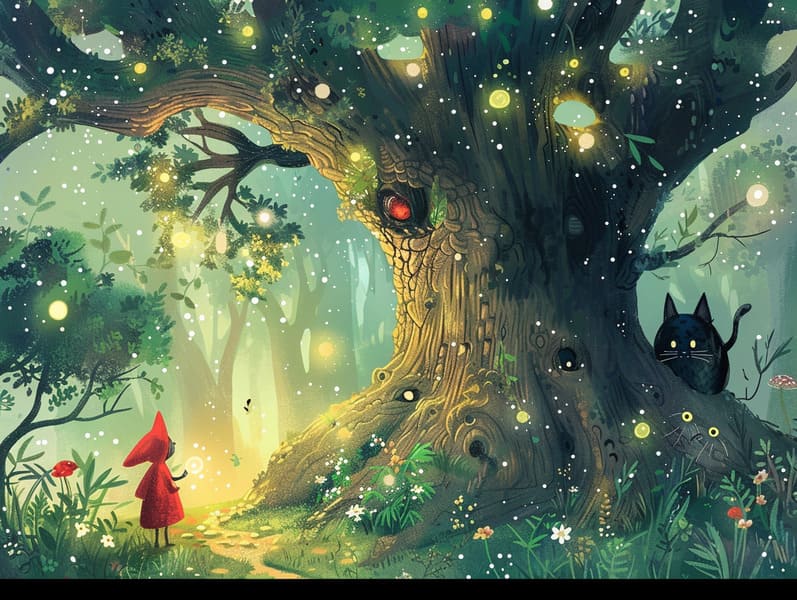Exploring the Roots of Famous Fairy Tales with Their Immortal Enchantment.
Exploring the Roots of Famous Fairy Tales with Their Immortal Enchantment.
Blog Article

Ancient fairy tales have long histories. These narratives have been transmitted from one generation to the next ages before they were ever put on paper. They were born from a variety of cultures, including Eastern traditions. They were initially disseminated among older generations, often carrying themes and messages aligned with the societal norms and beliefs of the time.
The renowned Brothers Grimm, Jacob and Wilhelm Grimm, were among the first to compile and release many of these beloved stories. Their collection, "Grimm's Folk Tales," included stories like "Cinderella," "Hansel and Gretel," and "Snow White," which have since become hallmarks in the world of famous fairy tales. Similarly, Hans Andersen's enchanting tales, such as "The Mermaid's Tale," and "The Story of the Ugly Duckling," have gained the love worldwide, cementing their place in the pantheon of iconic fairy tales.
Despite being ancient, fairy tales remain as meaningful as ever, especially as children's night stories. These charming stories are now available in various formats, including colorful picture books, magical animations, and online fairy tales.
Their ongoing significance can be traced to several whimsical characteristics:
Moral Lessons: Classic fairy tales often share important moral lessons. Tales like "The Wolf and the Liar" teach the virtue of honesty, while "The Story of the Tortoise and the Hare" demonstrate the qualities of tenacity and modesty. These stories offer children clear distinctions between truth and falsehood, guiding their moral compass in a tender yet impactful way.
Warmth and Understanding: Ancient fairy tales frequently involve figures facing problems and hurdles, prompting readers to empathize with their struggles and support their triumphs. For instance, "Beauty and the Beast" teaches us the virtue of looking beyond appearances to perceive the true character of a character, enhancing kindness and discernment.
Cultural Appreciation: Many timeless fairy tales are rooted in the cultural contexts from which they sprang. Reading these stories can provide enlightening views into different social structures, building a sense of world appreciation and discernment.
Imagination and Innovation: The imaginative elements in fairy tales—enchanted forests—motivate children’s visions and dreams. These narratives move readers to magical realms, triggering innovative thinking and a sense of delight that lasts a lifetime.
Traditional fairy tales are not only mesmerizing but also didactic. They provide alluring tools in strengthening various cognitive and emotional skills in young ones. When fairy tales are narrated, they enhance linguistic abilities by teaching new terms and intricate sentence structures. This practice also nurtures hearing perception and concentration, as the young keep up with the story, enthusiastic to see what happens next.
Furthermore, analyzing the themes and characters of timeless fairy tales can promote logical thinking and critical thinking. Kids are educated to identify patterns, expect results, and grasp cause and effect. These debates also encourage little ones convey their thoughts and feelings, promoting their emotional intelligence.
In today’s technological age, the availability of digital fairy tales has made these stories more acquirable than ever. Web-based platforms and software extend large libraries of traditional fairy tales that can be seen or listened via anytime, anywhere. Fairy tales spoken are particularly popular, presenting an immersive method for kids to appreciate these entrancing tales. Audio stories and read-out-loud videos transport characters and settings to life, often supported by charming harmonies and melodies that heighten the story journey.
The lasting appeal of ancient fairy tales lies in their ability to adjust to new eras while preserving their core messages. Contemporary versions of these fairy tales often integrate more different characters and modern settings, making them understandable to today’s audience. However, the fundamental themes of valour, sympathy, and justice remain unchanged, continuing to reach audiences of all ages.
Ancient fairy tales also offer a sense of serenity and predictability. They distribute a well-ordered narrative with a transparent beginning, middle, and end, often drawing to a close with the solving of conflicts and the triumph of good over evil. This regularity can be soothing for young readers, extending a sense of reliability in an ever-changing world.
Traditional fairy tales continue to enchant and inform new generations, maintaining their loveliness and relevance in modern society. As children's bedtime stories, they bring a perfect blend of captivation and insight, developing moral values, empathy, and creativity. The prevalence of online storybooks and the popularity of fairy tales read out loud affirm that these classic narratives remain obtainable to new generations.
By retaining and narrating these narratives, we continue to praise the rich tapestry of storytelling and cultural heritage. Whether you are viewing a richly illustrated book, browsing a digital library, or hearing an read-aloud story, the magic of bedtime fairy tales is always within reach. These fairy tales remind us of the timeless force of tales and its ability to link us across eras and regions.
If you are seeing a beautifully illustrated book, seeing a internet library, or hearing an sound book, the allure of old fairy tales is always within reach.
These tales illustrate here of the lasting strength of storytelling and its ability to bind us across eras and regions, weaving a spell that charms and informs alike.